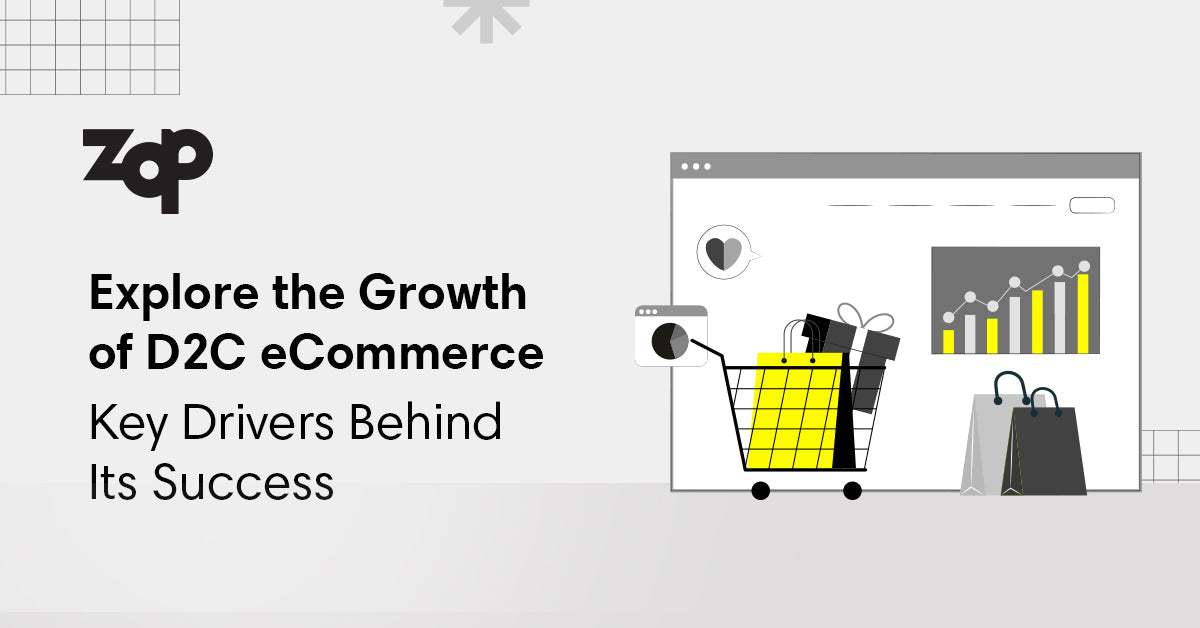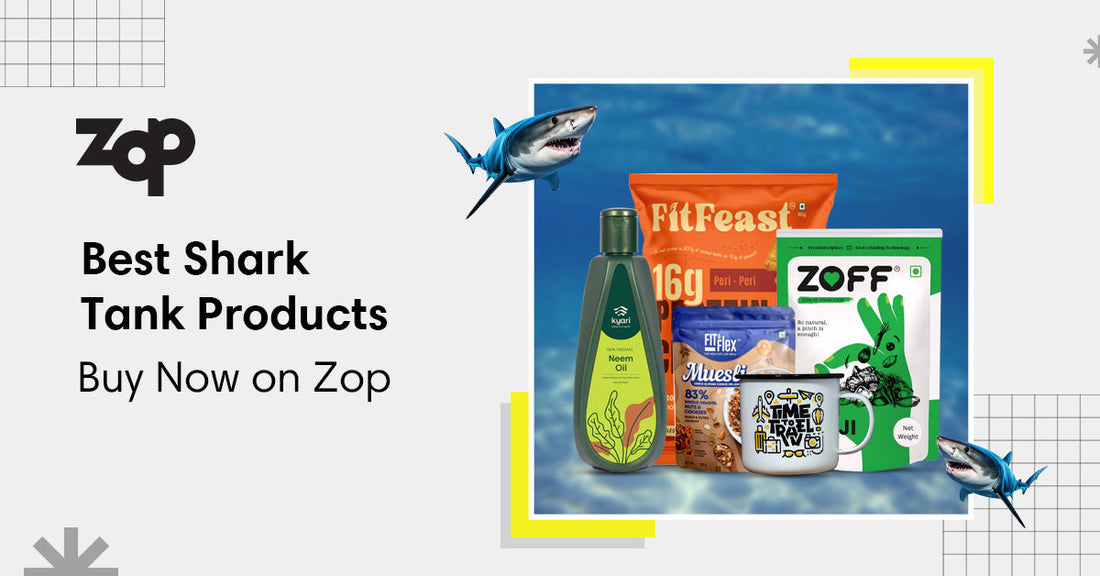Have you ever found yourself browsing a brand's website and making a purchase, completely bypassing platforms like Amazon or Flipkart? If you have, congratulations—you've already experienced the world of D2C eCommerce!
Direct-to-consumer (D2C) eCommerce is altering the way people shop. Today's online shopping experience is much more personal, convenient, and customised to match one's needs.
So, what's the buzz about D2C eCommerce? Also, how does it make life easier? Let's find out!
What is D2C eCommerce?
D2C eCommerce, simply put, is when customers buy products directly from brands through their online sites, bypassing the middlemen-distributors or retailers.
Take brands like Mamaearth, Boat, and Sugar Cosmetics. They've done well by connecting directly to the buyers. D2C builds a brand-to-buyer relationship that ensures:
-
You receive your goods at a competitive price.
-
The brand can accommodate your specific needs.
-
You have a more personal shopping experience.
This means greater control over decisions, better bargains, and direct communication with the brand, lacking in traditional retail.
The Growth of D2C eCommerce
Between 2022 and 2027, experts project the D2C eCommerce market to grow at an impressive rate of CAGR of 34.5%, Seller App says, over $60 billion is expected to be generated in revenue.
If you’ve noticed more and more brands reaching out to you directly—through Instagram ads, personalised emails, or even influencer reels—you’re not alone. That’s how D2C brands work to extend their offerings.
Instead of walking into a crowded store or scrolling through big marketplaces, you can now explore unique products straight from the people who make them. Be it handcrafted jewellery, eco-friendly home goods, or innovative skincare products, D2C brands are bridging the gap between them and you.
Brands no longer have to rely on middlemen or big retailers ever since online shopping became prevalent. Rather, they’re putting efforts into offering a personalised experience, like customised recommendations, exclusive deals, and even sneak peeks into their products’ making through websites and other online channels.
Many of these brands are listening to what you want by using social media channels for communication, customer surveys, your reviews or feedback, etc. From sustainable packaging to niche products you didn’t even know you needed, D2C brands are tailoring products and shopping experiences as per your preferences and needs.
Advantages of D2C eCommerce
D2C eCommerce brings exclusivity, affordability, personalisation, transparency, and convenience all in one place, transforming your entire shopping experience into a superior and fulfilling one. This is how you benefit from D2C businesses:
Exclusive Product Offerings
D2C brands are unique as they focus on innovation, providing products not found in traditional retail outlets. For example, brands like The Souled Store or Bewakoof curate special apparel lines representing niche tastes that customers seek out specifically through these D2C platforms.
Beyond that, D2C brands launch limited edition products pretty frequently, creating a type of FOMO and exclusivity around their products. You can browse through a handpicked selection of such items versus getting mass-produced, generic junk in actual retail stores.
Reasonable Pricing
D2C eCommerce stands out for its affordability. By cutting out middlemen, brands save costs and pass those savings to you. This allows access to premium products at lower prices than in physical stores, offering great value for money and a better shopping experience.
Personalised Shopping Experiences
D2C brands are pros in providing you with personalised experiences, using all kinds of advanced technology to accommodate individual consumer preference. For instance, AI-driven recommendations on websites provide customers with products matching their browsing history and purchasing behaviour as they shop online. Such features make it easy for you to find products quickly and get valuable suggestions.
Straight Communication with Brands
The best feature of D2C eCommerce is that you can connect with brands directly. You can ask questions, give your feedback, and even resolve issues in the least possible time and easiest way. For instance, you may have come across live chat option available through chatbot support on D2C websites, which provide immediate assistance and super fast responses.
Plus, many D2C brands are transparent about their sourcing and manufacturing processes and love to share details about their sustainability practices or product quality. It gives you a deeper insight into what goes behind the product, helping you make more informed buying decisions.
Convenient Policies
The best part is that most D2C brands have customer-friendly policies, which ensure that your shopping is smooth and hassle-free. Returns and exchanges are readily available for customers, and therefore, you don’t have to worry about keeping the wrong or damaged product and wasting money.
Meanwhile, you also find helpful FAQs, and reviews from other customers on D2C platforms like ZOP or brand websites to judge the quality of the product or the brand’s reputation before buying any product.
Challenges of D2C eCommerce
Even though D2C eCommerce has many merits, it also brings its own set of challenges.
Limited Touch and Feel Experience
One of the biggest hurdles in D2C eCommerce is that the lack of tangibility. Unlike shopping in physical stores, you can’t touch, feel, inspect, or try the product before buying online. It may leave you dissatisfied if the product does not match your expectations as you unbox or try it, especially when it comes to items like clothing or furniture.
Complex Return and Refund Policies
Sometimes, it can be more difficult to return or exchange a product purchased directly from a D2C brand website as compared to larger marketplaces. These brands could have lengthy or confusing refund processes, limited return windows, or unclear refund policies that can be off-putting and cumbersome for you.
High Shipping Costs
There could be some D2C brands that may charge a slightly higher delivery fees, especially for international orders or when you buy in small quantities. Consequently, you may hesitate in buying from such brands, as the overall price becomes unreasonably high.
Limited Customer Support
Some D2C brands, especially smaller businesses, may not have efficient customer service tools to promptly and properly handle customer queries. As a result, you may encounter delay in responses to your questions, unhelpful support, or a lack of communication channels.
Lack of Brand Trust
Since many D2C brands are relatively new or niche, you may not be able to trust them immediately. It takes some proof and credibility to make the final purchase. You may get concerned about product quality, payment security, or scams.
For instance, a D2C brand website may not have enough customer reviews to gauge the product’s quality, or you may feel these reviews may be fake. There’s a lack of trust when you try to buy from a new website or brand, hindering the purchase.
Inventory Shortages
Some D2C brands struggle to maintain consistent stock levels. It can leave you disappointed as your desired product is out of stock or has long waiting periods for restocking. This could happen more often during high-demand periods, like festivals.
Delivery Delays
The problem of shipping delays in D2C eCommerce, specifically in remote and unreachable areas, stands tall. Some brands thrive in their urban markets, but their penetration often stops in Tier 3 or rural areas. Despite several efforts, they’re unable to service some areas.
Another challenge is receiving your order on time, especially during peak seasons like festivals or unforeseen disruptions such as natural calamities. Shipping companies also have restraints on the amount of load they can handle. So, you may face shipping delays during these times as orders exponentially increase and brands are struggling to get them through.
How to Build a Successful D2C eCommerce Business?
D2C brands that succeed concentrate on several vital pillars, balancing the needs of their customers with a memorable shopping experience.
This is how you can start off and build a D2C brand:
Focus on Quality Products
At the core of every D2C brand that stands tall is always a promise of quality product excellence. That means not just achieving minimum requirements but going beyond to thrive. For example, some D2C brands invest heavy sums in research and development to innovate products that can solve some real problems. There are skincare brands creating formulations for their products and apparel brands designing comfort and durability customers have never experienced before.
Another very important aspect is incorporating ethical practices in your business. For instance, most modern consumers are concerned about sustainability. So, a D2C brand taking steps towards eco-friendly packaging and responsible sourcing may see a hike in its sales or become popular among eco-conscious consumers.
Solid Online Presence
Having a full-fledged online presence is simply non-negotiable for building a D2C brand. Think of the last time you shopped online: wasn't it more fun when the website was clean, easy to navigate, and visually engaging?
Apart from a well-managed website, an active and engaing presence on social media is always required. If you regularly post about your offerings on social media channels, like Instagram, Facebook, etc., it builds awareness and, more importantly, trust among your target audience. Moreover, seeing reviews about products, behind-the-scenes stories, or interactive posts makes customers feel connected to the brand, almost as if they are part of its journey.
Customer Centricity
The most successful D2C brands are those that hear their you out and make changes based on feedback. Do you ever leave a review or share a suggestion with any brand? It feels so amazing when the brand acknowledges it. This two-way relationship is what sets thriving D2C businesses apart from others. They are very eager to seek out customer insights to help refine their offerings.
On top of that, these brands often offer loyalty programs or early access to sales and new launches. It's a win-win—shoppers feel valued, and the brand gets repeat customers.
Smarter Payment Systems
Nothing is more infuriating than checking out and being greeted by some clunky or unreliable method of payment. This is a fact known to successful D2C brands, so they make sure that the transactions go through not only swiftly but also securely. It’s always more rewarding for the brand and customer when there are trusted payment gateways and multiple pay-mode options like UPI, credit cards, and even EMIs available to make shopping reliable and easy. Having seamless checkouts on your website saves time and leaves a good impression on the customer.
Reliable Delivery Networks
Reliable delivery networks or reputable shipping services satisfy your customer post-checkout. For instance, reasonable shipping is one of the privileges of D2C brands that many of you enjoy as a consumer. Plus, brands that give constant order-updates in real-time at each stage of the tracking process alleviate customer-concerns regarding a package's location or expected delivery date.
Another big plus of having strong delivery networks is flexible delivery options. From express delivery for a last-minute gift to self-pickup at convenience, choices make the experience even better. These are some gestures that draw buyers in, offering them convenience, value for money, and superior customer experience.
Conclusion
D2C eCommerce is an exciting and transformative shopping experience which puts you at the center. These brands provide unique products, personalised experiences, and direct communication, which makes all the difference.
You get access to exclusive deals and innovative products, staying in closer touch with your favourite brands. Moreover, there’s a wide variety of products in different categories, be it skincare, customised haircare, quirky apparel, or eco-friendly gadgets.
To build a successful D2C brand, focus on product quality, establish a strong online presence, prioritise customer experience, design a user-friendly website with secure and easy checkout, and ensure fast, reliable delivery with trusted networks.












